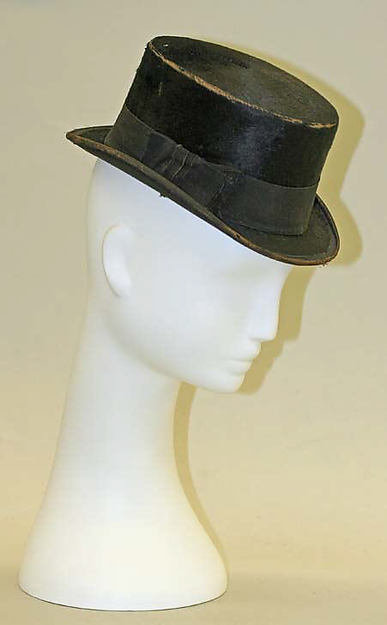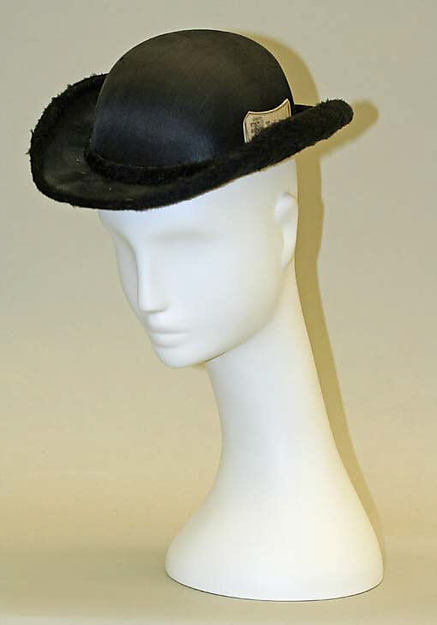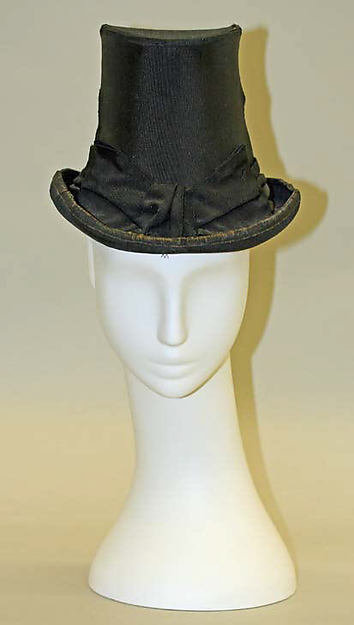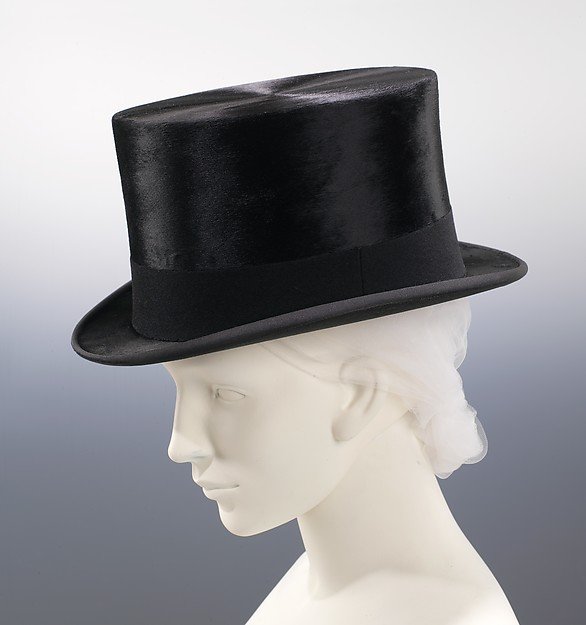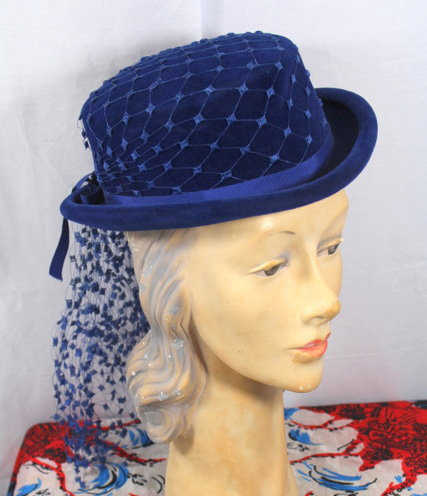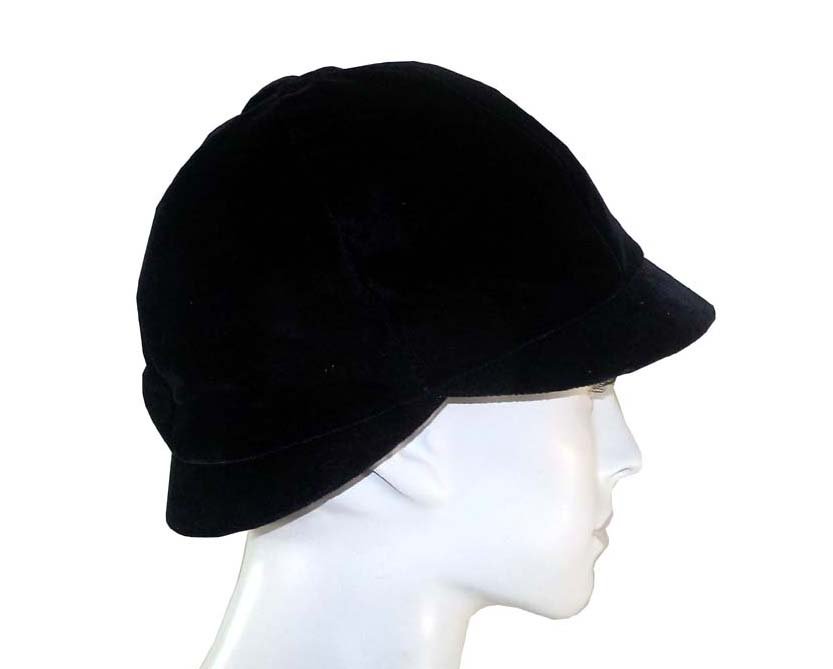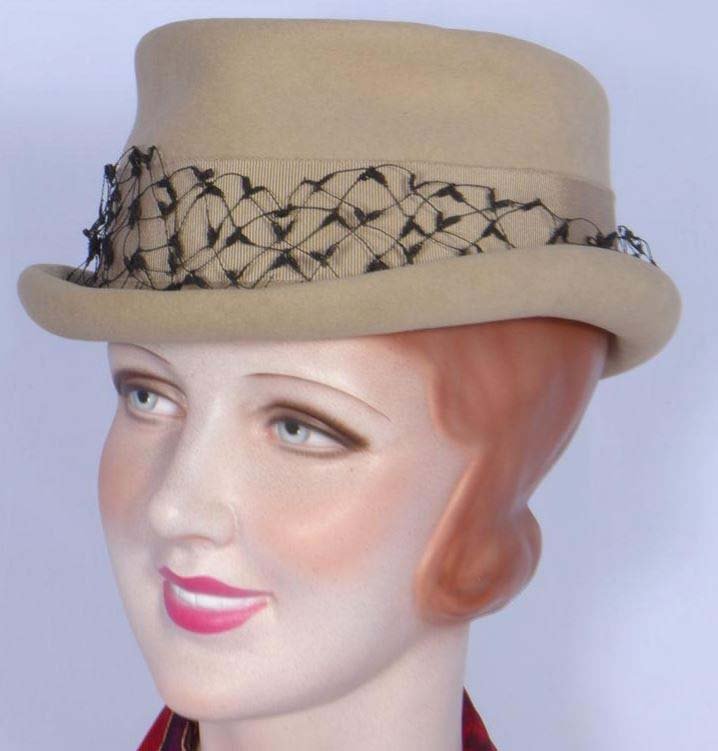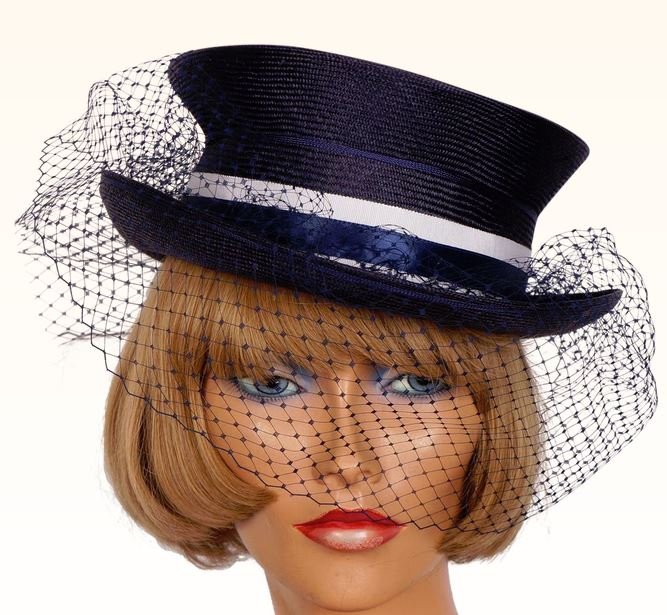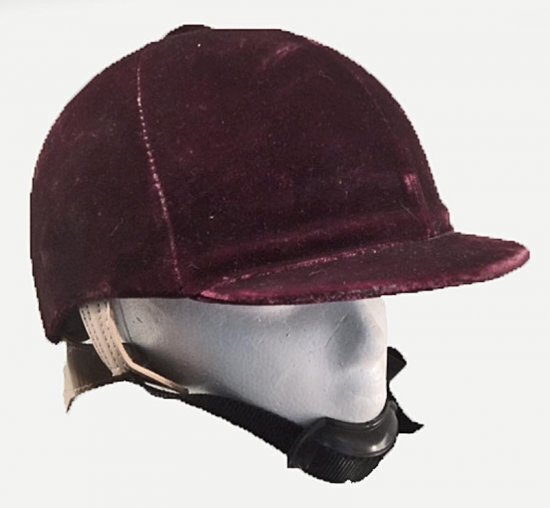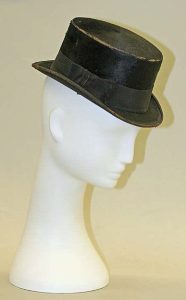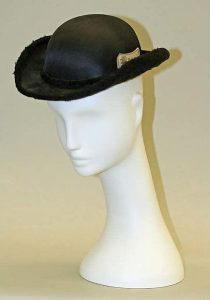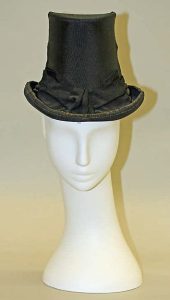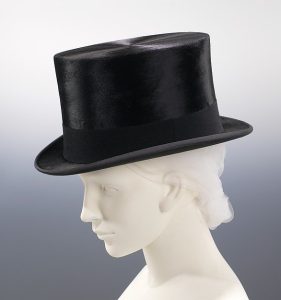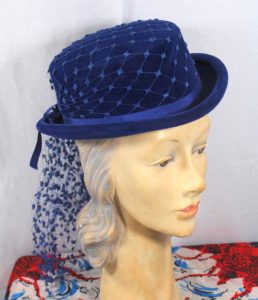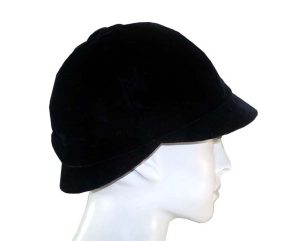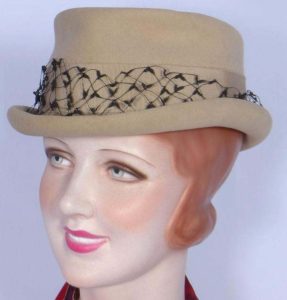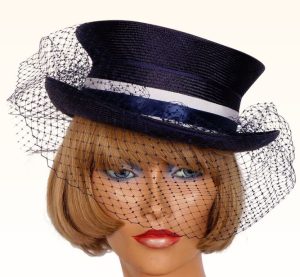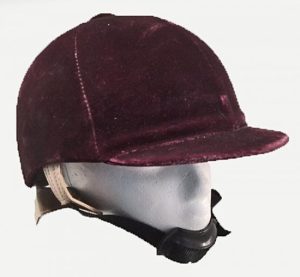When the Riding Hat first appeared several hundred years ago it was a fashion accessory.
The first fashionable style was the top hat, which was invented in 1797. It was primarily worn by foxhunters and is still worn for dressage. The bowler (or derby), with its hardened felt shell and round crown, came into fashion in 1849 and gained popularity in post-Victorian England, both for its style and its practicality.
The next major development in riding hats concerned safety for the riders. These helmets were usually hard domed shells with small bills covered in velvet or velveteen. Chin straps were later added for safety. The modern helmet has continued to evolve with improved safety features.
Milliners were inspired by these sporting hats in designing and producing their own versions as pure fashion accessories, thus coming full circle.
